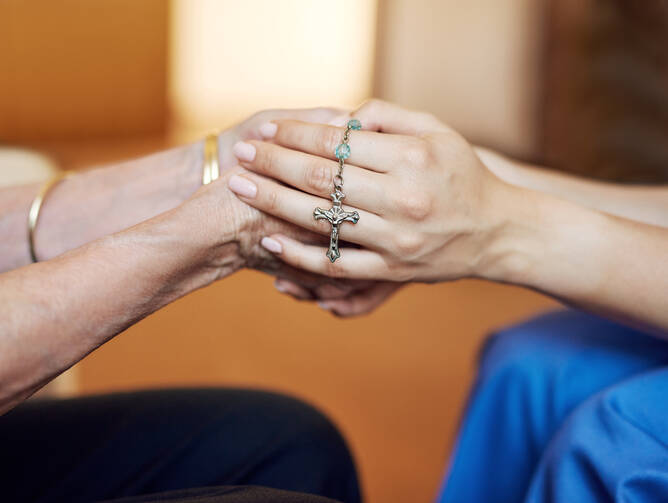Gradually, Americans are acknowledging the mortal facts of life and beginning to reclaim illness and dying from the grip of modern medicine. Faith communities are engaging their members in discussions about illness and dying. Far from being gloomy or dispiriting, this coming together to plan for these most profound questions of human life is energizing congregants and clergy alike.
In October 2016, at the request of Archbishop José H. Gomez of Los Angeles, I spoke with 700 diocesan priests about the challenges of caring for ill or aged people. As the only Jew and the only physician in the room, I talked about areas of commonality between faith traditions and between the professions of medicine and the ministry. I addressed misconceptions regarding sedation for terminal delirium and uncontrollable pain and talked about the ineffectiveness of medically administered nutrition to people with advanced dementia.
During the question-and-answer period, I expected comments about these controversial subjects. Instead, the clerics rose to share heartfelt stories from their own families—of grandparents, parents and siblings—as well as stories about frail parishioners to whom they ministered through sickness and suffering. The priests embraced the responsibility and opportunity of better preparing people to face the end of life together. As one example, churches across the Los Angeles area have begun holding “Care and Prepare” workshops for their parishioners dealing with end-of-life care issues.
Tackling issues of illness, caregiving, dying and grieving can enhance a congregation’s sense of meaning and purpose.
This experience strengthened my belief that tackling issues of illness, caregiving, dying and grieving can enhance a congregation’s sense of meaning and purpose. Let us remember that the medical profession’s hegemony over questions of illness and dying is a relatively new phenomenon. I came into the world in 1951 and grew up during the era in which medical science was curing so many previously fatal conditions that the line between science and science fiction became blurred.
The lesson we baby boomers took away was that progressively ill people needed progressively more intensive treatments. Yet there were unspoken caveats. First, every person whose life was saved by medicine still eventually died—either from the same underlying condition or, well, something else. Additionally, doctors are limited in what they can do because illness and dying are only partly medical.
From the first inkling that something is not right in one’s body—the early feelings of “dis-ease” —illness is fundamentally personal. As someone goes through the blood tests and scans that lead to the diagnosis of a serious medical condition, his or her energy level, body image, sense of self, worries and hopes for the future are all affected. During treatments for the condition, which can entail side effects and complications, a person’s work and personal roles, relationships and responsibilities are significantly changed. When a medical condition leads to a decline of health and function, questions of a spiritual nature arise: Why me? What if I don’t get better? What happens next?
Congregations are a natural milieu for these conversations. An innate sense of being part of something larger than ourselves draws us into the company of others with whom we can explore ultimate questions of life and death. Throughout history, when fires and floods have threatened people’s lives, dissolving all pretense of invincibility, we have turned to one another in community. And death is the natural disaster that awaits us all.
When fires and floods have threatened people’s lives, we have turned to one another in community. And death is the natural disaster that awaits us all.
Today’s churches, synagogues, mosques, temples, sanghas and meeting houses remain places of comfort and caring, places for discernment and guidance from religious teachings and spiritual traditions. Congregational environments liberate these topics from the confines of medicine and legitimize discussions of illness, treatment preferences and dying. Educational sessions provide information about each faith’s tenets and teachings, which guide people as they make treatment decisions consistent with their personal wishes.
Those who are drawn together by common beliefs, prayers and practices can ensure that as age or infirmity takes its inevitable toll, members of their community are not forgotten. We can accompany vulnerable people on an unchosen final journey. Each one of us can make certain that people within our own communities do not feel abandoned and that their basic bodily needs are met. We can keep them safe, warm and dry, and as clean and comfortable as possible. We can bear witness to people’s decline, as well as their continued dignity and worth. And we can hold them up, celebrating their accomplishments and honoring their contributions.
Equally important, when illness strikes, we can allow ourselves to be tended during our own waning and vulnerability. In caring and being cared for, people of faith can fulfill a commandment that is written in the Abrahamic covenant and embedded in the human genome: Matter to one another.










